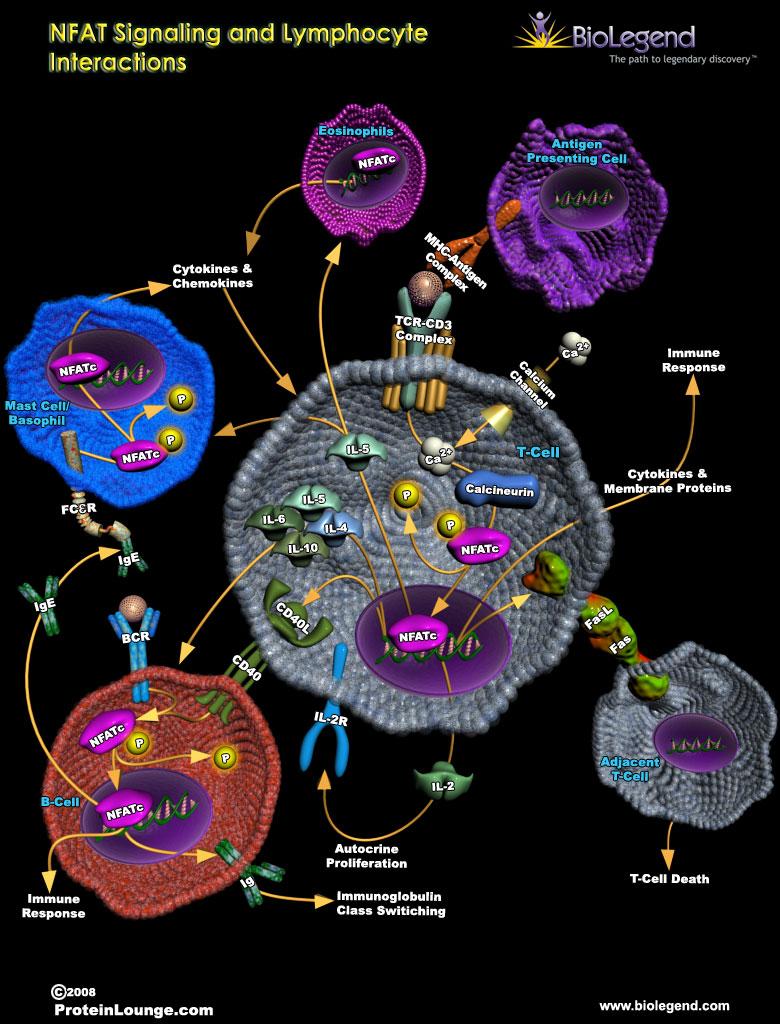NFAT Signaling and Lymphocyte Interactions
Nuclear factor of activated T cells (NFAT) is a transcription factor that relies on calcium for activation, and is critical for the differentiation of T cells and B cells. The NFAT family is comprised of five different proteins that share conserved DNA-binding domains. In T cells, NFAT proteins become activated when TCR engagement with antigen-bound MHC occurs together with calcium influx. The calcium-dependent phosphatase, calcineurin, then dephosphorylates NFAT, allowing NFAT to translocate into the nucleus to regulate gene expression. A number of genes can be activated by NFAT, including genes for CD40L and IL-4, which stimulate surrounding B cells to also turn on NFAT. NFAT activation in B cells helps to regulate immunoglobulin class switching to IgE, which in turn activates NFAT in mast cells/basophils to boost expression of cytokines. Other factors regulated by NFAT in T cells include IL-5, which can stimulate eosinophils, and FasL, which engages Fas receptors on nearby cells to induce cell death.
Click on the poster below to view the interactive version.
 Login / Register
Login / Register 








Follow Us